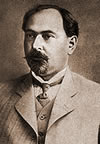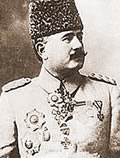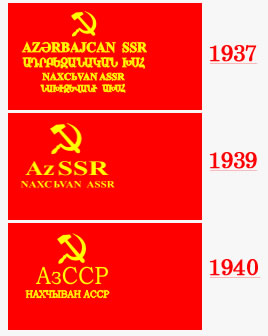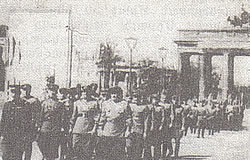USSR (part 1)
New losses
On December 1, 1920, when news of the Sovietization of Armenia reached Azerbaijan, Narimanov—the head of Azerbaijan’s Revolutionary Committee—unexpectedly announced that Azerbaijan was renouncing all territorial claims against Armenia. He proclaimed Karabakh, Nakhichevan, and Zangezour as integral parts of Armenia.
Yet only one day later, the decree mysteriously reappeared with altered wording: Nakhichevan and Zangezour were recognized as belonging to Armenia, while Karabakh was granted the ambiguous “right of self-determination.”
The strange alliance between Turkish nationalists and Russian Bolsheviks proved decisive—and disastrous—in determining Armenia’s borders. The Treaty of Alexandropol (December 1920) confirmed Armenia’s defeat. Then, in March 1921, Turkey and Soviet Russia signed the secretive Treaty of Moscow, detaching Nakhichevan from Armenia and attaching it to Soviet Azerbaijan.
In the summer of 1921, the Caucasian Bureau of the Bolshevik Communist Party held several sessions on the status of Karabakh. On July 4, the plenary session adopted a decree affirming Karabakh as part of Armenia. But the next day, Stalin convened an extraordinary session that reversed the decision and assigned Karabakh to Azerbaijan. The Treaty of Kars (October 1921) finalized the division of Armenian lands.
As a result of Soviet–Turkish political manipulation, the territory of the Soviet Republic of Armenia was reduced to just 30,000 square kilometers. Even Mount Ararat, the spiritual symbol of the nation, was lost.
Fate of Nakhichevan
 Old Armenian cemetery near Julfa, Nachichevan, now destroyed.
Old Armenian cemetery near Julfa, Nachichevan, now destroyed.
Under Soviet rule, Nakhichevan—a historic Armenian province with an Armenian name and rich Armenian cultural heritage—underwent a systematic process of “white genocide” and ethnic cleansing. In the 19th century, Armenians had formed the overwhelming majority. Even in the 1920s, they still made up around 50% of the population.
After 1936, when the Turkic population of Azerbaijan was officially renamed “Azerbaijanis” (instead of “Caucasian Tatars”), Soviet historians, following Party directives, began fabricating a “history of Azerbaijan.” Unique Armenian monuments—including early Christian churches and thousands of khachkars—were deliberately destroyed to erase the Armenian past. The region was heavily resettled with Turks, while Armenians emigrated in large numbers. By the 1959 census, Armenians composed only 1.5% of the population.
Stalin’s purges
From 1922 to 1936, Armenia was incorporated into the Transcaucasian Soviet Federative Socialist Republic, together with Georgia and Azerbaijan. The USSR Constitution of 1936 dissolved the federation, and Armenia became one of the fifteen Soviet Socialist Republics. Like all Soviet republics, it was governed by the Republican Communist Party, whose First Secretaries were appointed directly from Moscow.
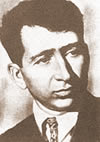 Great Armenian poet Eghishe Charents was arrested and executed during Stalin’s purges.
Great Armenian poet Eghishe Charents was arrested and executed during Stalin’s purges.
Beginning in the mid-1930s, Armenians suffered deeply during Stalin’s nationwide campaign of political terror. The purges reached every Armenian family. Thousands of intellectuals, artists, scientists, and public figures were arrested, executed, or exiled to Soviet labor camps.
The WWII
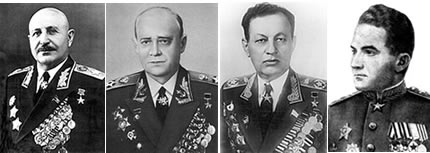 The Armenian Marshals: Hovannes Bagramyan, Marshal of the Soviet Union; Ivan Isakov, Admiral of the Fleet; Hamazasp Babadzhanian, Chief Marshal of the Mechanized Forces; and Sergei Khudyakov (born Armenak Khanferiants), chief Marshal of the Air Force. During World War II, Armenians played a significant role in the Soviet victory over Nazi Germany. More than 500,000 Armenians served in the Soviet army; half of them died in combat. One hundred and six Armenians were awarded the title “Hero of the Soviet Union”.
The Armenian Marshals: Hovannes Bagramyan, Marshal of the Soviet Union; Ivan Isakov, Admiral of the Fleet; Hamazasp Babadzhanian, Chief Marshal of the Mechanized Forces; and Sergei Khudyakov (born Armenak Khanferiants), chief Marshal of the Air Force. During World War II, Armenians played a significant role in the Soviet victory over Nazi Germany. More than 500,000 Armenians served in the Soviet army; half of them died in combat. One hundred and six Armenians were awarded the title “Hero of the Soviet Union”.
 Armenian pilot Nelson Stepanyan was decorated as Hero of the Soviet Union twice.
Armenian pilot Nelson Stepanyan was decorated as Hero of the Soviet Union twice.
Five Armenian infantry divisions were formed. The famed 89th Rifle Division—the Tamanian Division—fought bravely in numerous battles across Eastern Europe. Armenia contributed four marshals and sixty generals to the Soviet war effort. The Armenian Church and Armenian communities abroad donated substantial funds to support the military.
After World War II, both the Armenian and Georgian Soviet Republics submitted territorial claims against Turkey. However, the Soviet government soon abandoned these claims, declaring that the USSR had no further disputes with Turkey—thus ending hopes for the restoration of Armenian lands.

